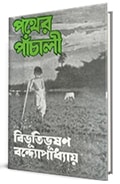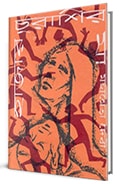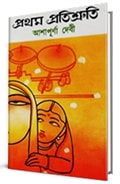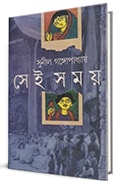August 30, 2019
Author: Elsa Thomas Editor: Preksha Sharma
Tags
Perspective
Beyond the Gulf Dream — Malayali writers investigate the lives of immigrant workers
 What is the Gulf dream?
What is the Gulf dream?
“Perhaps the same stock dreams that 1.4 million Malayalis in the Gulf had when they were in Kerala — a gold watch, fridge, TV, car, AC, tape recorder, VCP, a heavy gold chain.” (Goat Days 38)
The oil boom in the mid-1960’s beckoned to the cheap and unskilled labour and more than a few fleets of ships set course for the Middle East from the coasts of Kerala. Accounts of first-generation Malayalis who reached the Gulf shores on launches and ships are replete with bitter experiences. But the contribution of these expats or pravasis towards improving the standard of living in Kerala is always recounted with pride. Gulf cities and towns are still epicentres of dreams and nightmares for a large section of Malayali diaspora. The narratives around the life of a pravasi have thus become a major theme in the Malayali expatriate writings.
The saying that ‘Malayalis are as ubiquitous in the Gulf as the sandy deserts and shopping malls’, stands true even today. While the skilled and semi-skilled workers still choose to work in the Middle East, majority of migrant workers are unskilled Malayalis belonging to the lower middle-class. They often work without citizenship rights, endure miserable living conditions, and ultimately have to leave the Gulf. The humanitarian crisis of these labourers has managed only a bleak exposure in Indian fiction till now. However, in recent times, a number of novels and travelogues published in the Malayalam ingeniously encapsulate the ordeals of the migrant community.
Writer and author Benyamin’s Malayalam novel, Aadujeevitham (2008) is one such work. The novel gained a wide readership owing to its realistic and heart-wrenching prose, and was translated as Goat Days (2012) by Joseph Koyippally. The novel presents the protagonist, Najeeb’s journey through the desert land, the trials and hardships he undergoes. But more importantly, it draws a picture of the life of an immigrant worker forced into labour in Saudi Arabia. The inability to satisfy his needs from his meagre income and the regulation in sand mining activity in his hometown lures Najeeb to the Gulf.
“When a friend from Karuvatta casually mentioned there was a visa for sale, I felt a yearning I had never experienced before. How long have I been here, diving for a living? How about going abroad for once? Not for long. I am not that greedy. Only long enough to settle for a few debts. Add a room to the house. Just the usual cravings of most Malayalis.” (Goat Days 35)
Najeeb’s dreams shatter on receiving an inhuman treatment by his arbab, his employer. He was promised a job in a construction firm but was forced to spend over three years as bonded labourer in a goat farm. Yearning for the homeland and the sheer will of the immigrant labourers to survive the toughest situations form the pith and core of the novel.
Many such accounts of these ‘guest workers’ are remembered, recollected and often written in Malayalam. English translations of these become a window for the non-Malayali reader in to the social, mental and physical sufferings that the forced labourers endure in Gulf countries. Najeeb’s story contrasts our ideas and assumptions of the Gulf life of the expats — the one with fancy perfumes, imported chocolates, dry fruits, and gigantic houses that adorn the streets of Kerala.
Contemporary Malayali writers have explored the lives of underprivileged labourers who sailed to the Middle East, chasing the glittering Gulf dream, but slowly eroding in hard labour. Many travelogues, memoirs and other non-fiction works in the Malayalam, with a focus on the migrant labourer, are now added to the list of brilliant fiction titles in the language. Here, a list of books will give you a peek in to the lives of Indian labourers in the Gulf:
Marubhoomiyude Atmakatha (2008), which translates to ‘the biography of the desert’, is a travelogue by V Musafar Ahammed that won the Sahitya Akademi award in the year 2010. Ahammed’s work acquaints the reader with the slave narratives against the celebrated narratives of the Gulf dream. It was translated in English by PJ Mathew, and was titled, Camels in the Sky: Travels in Arabia.
Babu Bharadwaj’s Pravasiyude Kurippukal (2010) directly translating to ‘notes of an expat’, is a memoir of life and thoughts of a man in exile. The recurrent themes of love, life and loneliness are weaved into the narrative.
P Manikandhan’s Malayaliyude Swanthwasneshanangal (2010), ‘Malayalis’ search for themselves,’ was the winner of NV Krishna Warrier award for best critical work by Kerala Bhasha literature. It covers subjects from the Gulf migrant workers’ literary endeavours to politics of eco-feminism.
Jasmine Days, 2018 English translation of Benyamin’s Mullappoo Niramulla Pakalukal (2014) is the story of Sameera Parvin, a young Pakistani woman who works as a radio jockey in an unnamed Middle-Eastern country that is on the verge of revolution.
Deepak Unnikrishnan’s Temporary People, is a set of interrelated stories—with a hint of magic realism—on Indian labourers in the Middle East. The book won 2016 Restless Books Prize for New Immigrant Writing.
Work cited:
Benyamin. Goat Days. Penguin Random House, 2012. Print.
 Pather Panchali by Bibhutibhushan Bandyopadhyay
Pather Panchali by Bibhutibhushan Bandyopadhyay




